That was not very clever: visiting the National Archaeological Museum on the last day of a two week trip through northern and central Greece. Of course, it was a nice summary of everything we’ve seen, but I think it would have been better to start over here. Ever a teacher, I might have used the museum’s splendid collection of sculpture to explain to my companions the development of Greek art.
That’s what you’ll find on the first floor: lots of sculpture in a series of rooms surrounding a large hall, which is devoted to Mycenaean art. There, you will find the golden objects from Mycenae that Schliemann found. The sculpture rooms surround it. Your tour starts with some kouroi and you can easily follow the growth to greater accuracy in representing the human body. When you’ve finished about a third of your tour, the Greek sculptors have mastered every aspect of anatomy, and you will pass along many classical sculptures, including two dazzling copies of the Diadumenus and the Cnidian Aphrodite. After that, more sculpture: the fourth century, Hellenism, and finally the Roman age.
On the ground floor, there’s also a series of rooms that contain metal art. Here, you will see the Anticythera Mechanism, but also collections of arrowheads from Marathon and Thermopylae. The Egyptian part – also on the ground floor – is a bit odd in a museum dedicated to Greek art, but the collection is too small to be exposed in a museum of its own and too important to keep stored away. In the Hellenistic part of the Egyptian collection, I noticed a statue of Hephaestion that I had never seen before.
Upstairs, you will find a marvelous collection of pottery and some objects that don’t fit anywhere else, like the Lemnian inscription, written in a language related to Etruscan. Next to it is a section dedicated to the investigations at Santorini, where some splendid frescoes have been found.
Do not forget to visit the basement. There’s a little café with a garden, where you will see some of the sculptures found in the Anticythera wreck. They have a certain beauty because they are partly eroded. I found the giant Heracles absolutely fascinating.
This museum was visited in 1989, 1992, 2004, 2007, 2010.
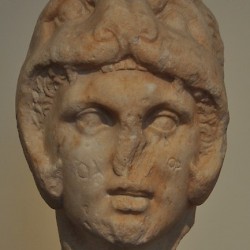 Athens, Kerameikos, Alexander with a Lion's Pelt
|
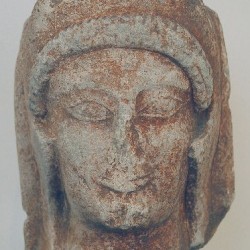 Lycian portrait of Omphale
|
 Argos, Heraion, West pediment, Head of Hera
|
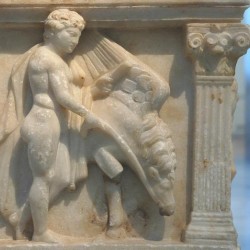 Megiste, Bellerophon sarcophagus.
|
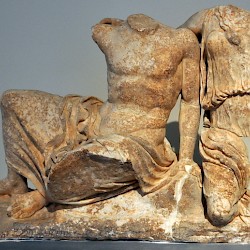 Eleusis, Temple F, Cecrops and Herse
|
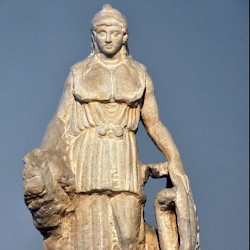 Athens, Pnyx, Lenormant Athena
|
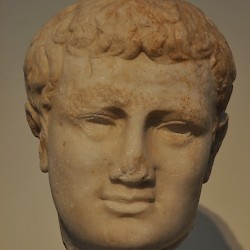 Smyrna, Portrait of Caligula, reworked to resemble Titus
|
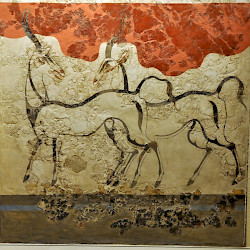 Akrotiri, Building B, Room B1, Wall painting of antelopes
|
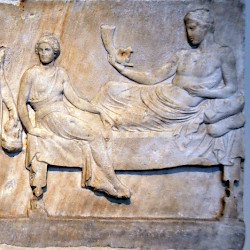 Piraeus, Votive stela of a reclining Dionysus
|
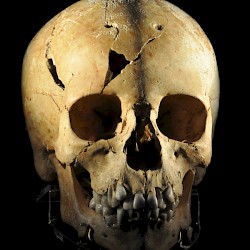 Athens, Kerameikos, Skull of Myrthis
|
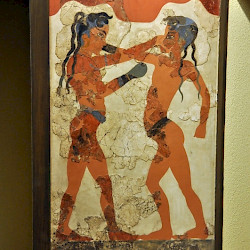 Akrotiri, Building B, Room B1, Wall painting of boxers
|
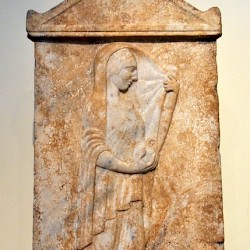 Larisa, Tombstone of Polyxena
|
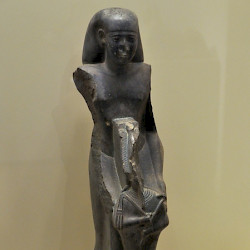 Sais, Temple of Neith, Statuette
|
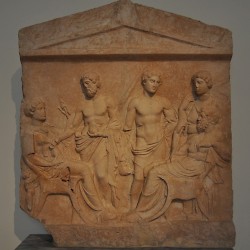 Thebes, Tombstone
|
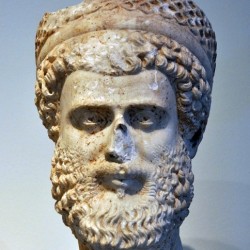 Piraeus, Julian the Apostate
|
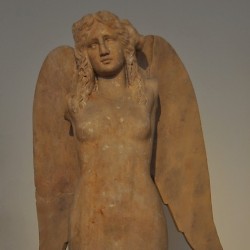 Athens, Kerameikos, Siren
|
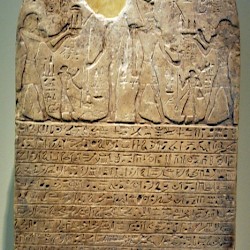 Decree of Tefnakht
|
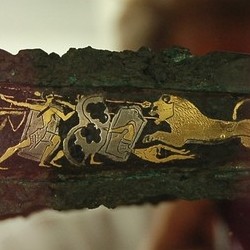 Mycene, Dagger with lion hunt
|
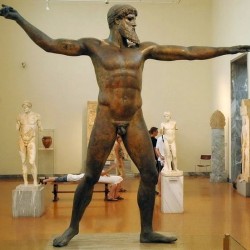 Artemisium, Statue of Zeus
|
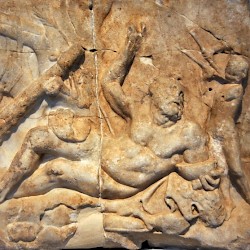 Eleusis, Relief of a drunk Heracles
|
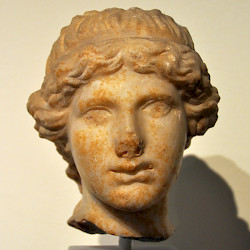 Chalcis-Vromousa, Head of a woman (Roman copy of a Greek original)
|
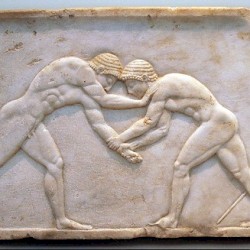 Athens, Kerameikos, Base of the statue of a wrestler
|
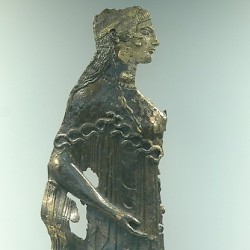 Lead figurine of Athena
|
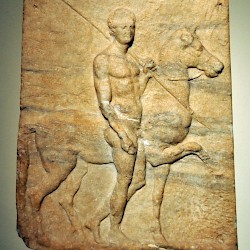 Argos, Relief of the Doryphorus of Polykleitos
|
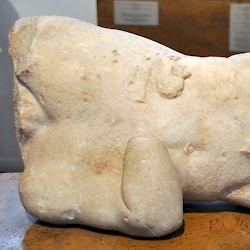 Aegina, Temple of Apollo, Statue of a wounded warrior
|
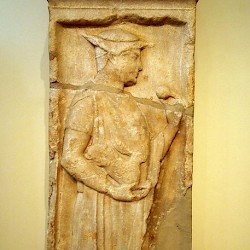 Larisa, Tombstone of a man with a hat
|
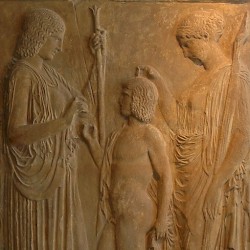 Eleusis, Relief of Demeter, Triptolemus, and Kore
|
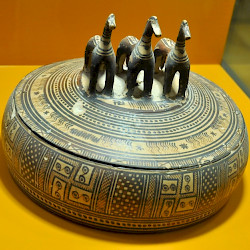 Athens, Agora, Late Geometric pyxis
|
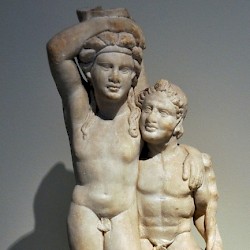 Megara, Statue of Dionysus
|
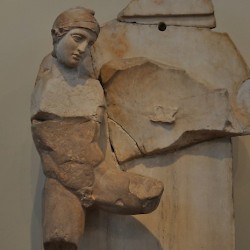 Argos, Heraion, Amazonomachy
|
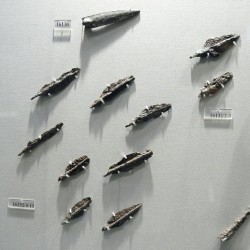 Thermopylae, Arrowheads
|
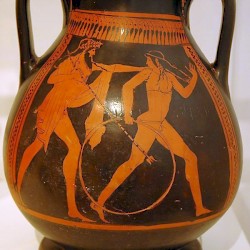 Zeus and Ganymedes
|
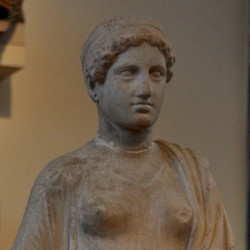 Piraeus, Statue of a woman or Demeter
|
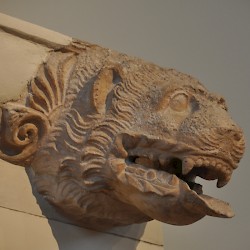 Argos, Heraion, Sima
|
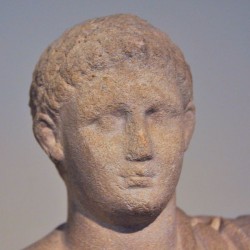 Alexandria, Hephaestion (part of a group with Alexander)
|
 The fight for the body of Patroclus.
|
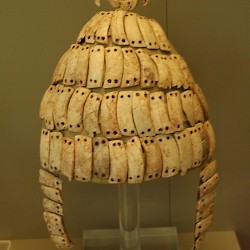 Mycene, Boar's tusk helmet
|
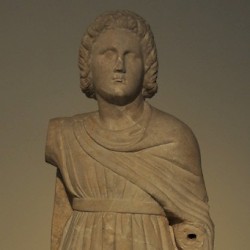 Alexandria, Alexander the Great (part of a group with Hephaestion)
|
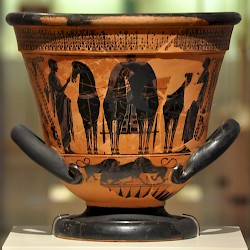 Pharsalus, Krater with a four-horse chariot
|
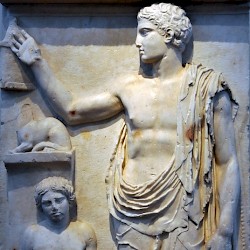 Aegina, Tombstone of a young man, holding a bird
|
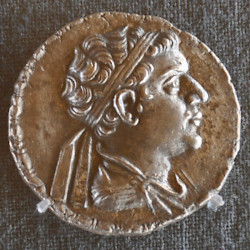 Eucratides II of Bactria
|
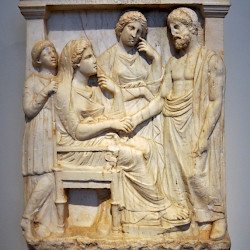 Piraeus, Funerary stela of Damasistrate
|
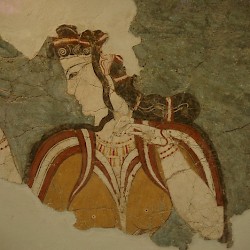 Mycene, Wall painting ("La Parisienne")
|
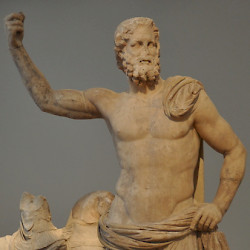 Melos, Statue of Poseidon
|
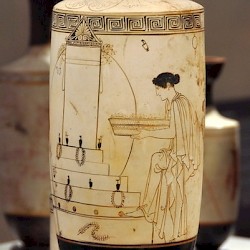 Eretria, Lekythos (Bosanquet Painter)
|
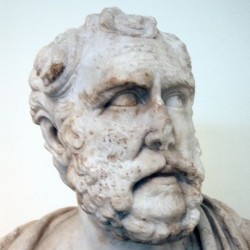 Athens, Temple of Zeus, Portrait of Polemo of Laodicea
|
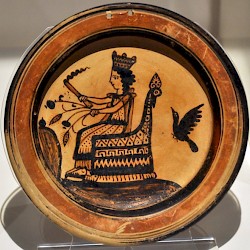 Corinth, Plate with Demeter
|
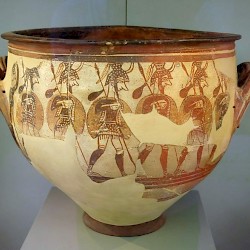 Mycene, House of the Warrior Krater, Warrior Krater
|
 Piraeus, Funerary stela with ball players
|
 Athens, Varvakeion Athena
|
 Marathon, Arrowheads
|
 Lemnos, Tombstone of an Etruscan (?) warrior
|
 Nysa, Bouleuterion, "Little Refugee"
|
 Hellenistic ruler
|
 Athens, Kerameikos, Dipylon krater
|
 Argos, Theater, Statue of Aphrodite
|
 Oropos, Aeolian-Ionic capital
|
 Corinth, Relief of a hoplite
|
 Argos, Heraion, West pediment, Palladion
|
 Olympia, Head of the boxer Satyros
|
 Mycene, Wall painting of a griffin with a warrior
|
 Piraeus, Head of a bearded god
|
 Piraeus, Theater, Head of Dionysus (classicizing)
|
 Aegina, Ptolemy VI Philometor
|
 Megara, Statue of a Roman emperor (Trajan or Hadrian)
|
 Lebadeia, Relief of Trophonius
|
 Thebes, Head of Artemis
|
 Eleusis, Tombstone of a warrior
|
 Gomphoi, Relief of Odysseus and Amphicleia
|
 Sparta, Statue of Julia Aquilia Severa, damaged after her death
|
 Athens, Statue of a Minotaur
|
 Athens, Stoa of Attalus, Attalus II Philadelphus
|
 Thebes (?), Block statue of Prince Horwedja, governor and high priest in Heliopolis
|
 Dodona, Figurine of Zeus Keraunos
|
 Epidauros, Temple of Artemis, Nike
|
 Eretria, Gymnasium, Statue of Cleonicus
|











































































